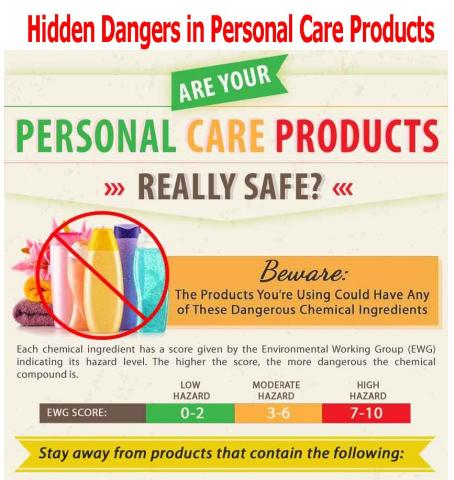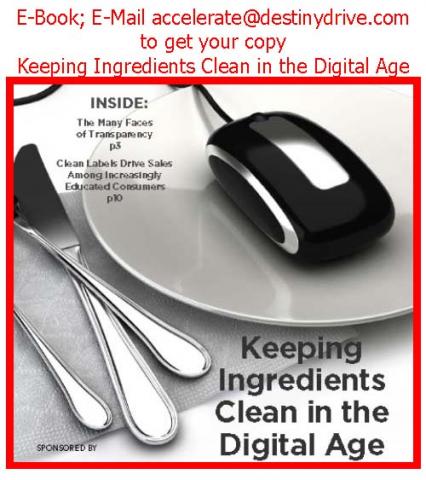An interesting talk by the Head of Daimler Benz
A bit mind blowing to say the least! He predicted an interesting concept
of what could lay ahead.
In a recent interview, the Head of Daimler Benz (Mercedes Benz) said their competitors are no longer other car companies, but Tesla (obviously), and now, Google, Apple, Amazon 'et al' are……
Software will disrupt most traditional industries in the next 5-10 years.
Uber is just a software tool, they don't own any cars, and are now the biggest taxi company in the world.
Airbnb is now the biggest hotel company in the world, although they don't own any properties.
Artificial Intelligence: Computers become exponentially better in understanding the world. This year, a computer beat the best Go player in the world, 10 years earlier than expected.
In the U.S., young lawyers already can't get jobs. Because of IBM Watson, you can get legal advice (so far for more or less basic stuff) within seconds, with 90% accuracy compared with 70% accuracy when done by humans.
So, if you study law, stop immediately. There will be 90% less lawyers in the future, only specialists will remain.
Watson already helps nurses diagnosing cancer, 4 times more accurate than human nurses. Face book now has a pattern recognition software that can recognize faces better than humans. In 2030, computers will become more intelligent than humans.
Autonomous cars: In 2018 the first self-driving cars will appear for the public. Around 2020, the complete industry will start to be disrupted. You don't want to own a car anymore. You will call a car with your phone; it will show up at your location and drive you to your destination. You will not need to park it, you only pay for the driven distance and you can be productive while driving. Our kids will never get a driver's license and will never own a car.
It will change the cities, because we will need 90-95% less cars for that. We can transform former parking spaces into parks.
1.2 million people die each year in car accidents worldwide. We now have one accident every 60,000 miles (100,000 km), with autonomous driving that will drop to one accident in 6 million miles (10 million km). That will save a million lives each year.
Most car companies will probably go bankrupt. Traditional car companies will try the traditional approach and try to build a better car, while tech companies (Tesla, Apple, Google) will take the revolutionary approach and build a computer on wheels.
Many engineers from Volkswagen and Audi are completely terrified of Tesla.
Auto Insurance companies will have massive trouble because without accidents, car insurance will become much cheaper. Their car insurance business model will slowly disappear.
Real estate will change. Because if you can work while you commute, people will move further away to live in a more beautiful neighborhood.
Electric cars will become mainstream about 2020. Cities will be less noisy because all new cars will run on electricity. Electricity will become incredibly cheap and clean: Solar production has been on an exponential curve for 30 years, and now you can now see the burgeoning impact.
Last year, more solar energy was installed worldwide than fossil. Energy companies are desperately trying to limit access to the grid to prevent competition from home solar installations, but that can't last. Technology will take care of that strategy.
With cheap electricity comes cheap and abundant water. Desalination of salt water now only needs 2kwh per cubic meter (@ 0.25 cents). We don't have scarce water in most places; we only have scarce drinking water. Imagine what will be possible if anyone can have as much clean water as he wants, for nearly no cost.
Health innovations: The Tricorder X price will be announced this year. There are companies who will build a medical device (called the "Tricorder" from Star Trek) that works with your phone, which takes your retina scan, your blood sample, and you can breathe into it.
It then analyses 54 biomarkers that will identify nearly any disease. It will be cheap, so in a few years everyone on this planet will have access to world class medical analysis, nearly for free. Goodbye, medical establishment.
3D printing: The price of the cheapest 3D printer came down from $18,000 to $400 within 10 years. In the same time, it became 100 times faster. All major shoe companies have already started 3D printing shoes.
Some common spare airplane parts are already 3D printed in remote airports. The space station now has a printer that eliminates the need for the large amount of spare parts they used to keep in the past.
At the end of this year, new smart phones will have 3D scanning possibilities. You can then 3D scan your feet and print your perfect shoes at home.
In China, they already 3D printed and built a complete 6-storey office building. By 2027, 10% of everything that's being produced will be 3D printed.
Business opportunities: If you think of a niche you want to go in, ask yourself: "In the future, do you think we will have that?", and if the answer is yes, how can you make that happen sooner?
If it doesn't work with your phone, forget the idea. And any idea designed for success in the 20th century is doomed to failure in the 21st century.
Work: 70-80% of jobs will disappear in the next 20 years. There will be a lot of new jobs, but it is not clear if there will be enough new jobs in such a small time.
Agriculture: There will be a $100 agricultural robot in the future. Farmers in 3rd world countries can then become managers of their field instead of working all day on their fields.
Aeroponics will need much less water. The first Petri dish that produced veal is now available and will be cheaper than cow produced veal in 2018. Right now, 30% of all agricultural surfaces is used for cows. Imagine if we don't need that space anymore.
There are several start-ups who will bring insect protein to the market shortly. It contains more protein than meat. It will be labeled as "alternative protein source" (because most people still reject the idea of eating insects).
There is an app called "moodies" which can already tell in which mood you're in. By 2020 there will be apps that can tell by your facial expressions, if you are lying. Imagine a political debate where it's being displayed when they're telling the truth and when they're not.
Bitcoin may even become the default reserve currency ... Of the world!
Longevity: Right now, the average life span increases by 3 months per year. Four years ago, the life span used to be 79 years, now its 80 years. The increase itself is increasing and by 2036, there will be more than one year increase per year. So, we all might live for a long time, probably way more than 100.
Education: The cheapest smart phones are already at $10 in Africa and Asia. By 2020, 70% of all humans will own a smart phone. That means, everyone has the same access to world class education.
Every child can use Khan Academy for everything a child needs to learn at school in First World countries. There have already been releases of software in Indonesia and soon there will be releases in Arabic, Swahili, and Chinese this summer. I can see enormous potential if we give the English app for free, so that children in Africa and everywhere else can become fluent in English. And that could happen within half a year.
Are you ready for all this?!?!?
Big Pharma CEO Arrested
For Bribing Doctors to Prescribe
This article was originally published by RealFarmacy
Big Pharma billionaire and CEO John Kapoor was arrested by federal agents for allegedly bribing doctors into prescribing a highly addictive opioid pain medication and destroying untold thousands of lives, the Department of Justice said.
John Kapoor, the founder and CEO of Insys Therapeutics, Inc., is accused of “leading a nationwide conspiracy to profit by using bribes and fraud to cause the illegal distribution ofSubsys, a powerful Fentanyl spray intended for cancer patients experiencing breakthrough pain,” the DOJ said.
The arrest came on the same day President Trump declared a national emergency to fight opioid addiction in the United States. “We owe it to our children and to our country to do everything in our power to address this national shame and human tragedy,” Trump said.
Big Pharma boss John Kapoor faces several felony charges, including RICO conspiracy, conspiracy to commit mail and wire fraud and conspiracy to violate the Anti-Kickback Law, and is facing decades in prison and millions of dollars in fines, according to UPI.
“In the midst of a nationwide opioid epidemic that has reached crisis proportions, Mr. Kapoor and his company stand accused of bribing doctors to overprescribe a potent opioid and committing fraud on insurance companies solely for profit,” said Acting United States Attorney William D. Weinreb.
He added: “We must hold the industry and its leadership accountable — just as we would the cartels or a street-level drug dealer. “
The arrest of the Big Pharma billionaire has added weight to claims that doctors are operating irresponsibly, endangering the health and lives of their patients, as they seek to make as much money as possible from the Big Pharma companies.
Calls for doctors to publicly declare their financial deals with pharmaceutical companies have gained popularity in recent years, as public awareness grows regarding the Big Pharma racket.
According to ProPublica’s “Dollars for Docs” website, which you can use to find out if your doctor accepts money from Big Pharma companies. 1,630 companies have made payments to more than 681,000 doctors in the United States, totaling more than $3.5 billion.
You can also find out if your doctor receives payments from Big Pharma by visiting OpenPaymentsData.cms.gov. This site has tallied nearly $6.5 billion in payments since 2013.
Drug companies have long tried to influence doctors’ prescribing habits by paying them for research activities, speaking and other “consulting,” or offering gifts of free meals and travel. However, it hasn’t always been possible to find out what gifts your own doctor might be accepting.
The Physician Payments Sunshine Act, which is part of the Affordable Care Act, went into effect in 2013. For the first time, the Act requires drug and medical device makers to collect and disclose any payments of more than $10 made to physicians and teaching hospitals.
The Centers for Medicare & Medicaid Services (CMS) is in charge of implementing the Sunshine Act, which it has done via its Open Payments Program. You can easily search the site to find out about payments your doctor has received, along with the nature of the payments.
That “worst health” label includes a ranking of 34th in the world with infant mortality. In other words, the USA has the 34th worst infant survival with its highest rate of vaccinations. Some are directly from multiple vaccinations administered.
But the USA leads the world in infant vaccinations, those administered during the first year after their births – 26 vaccinations during that time.
The only vaccination I recall receiving during early childhood, circa 1948, was the smallpox vaccine, the one that left a circle of shallow pockmarks on the upper arm, a non-ink tattoo that proved you had received that vaccine. Months later there was the booster shot which gave me a vacation of several days away from my first grade teacher while sitting out the chicken pox.
During Naval training the mass vaccination high pressure hand held gun that replaced syringes and needles was tried on us with the polio shot. I wound up with a vacation in the base infirmary with an extended period of the flu. Between those two, there may have been a tetanus shot or two.
From the Healthy Home Economist:
-In1950, there were 3 childhood vaccines typically given when a child entered school.
-In 1983, there were 10 recommended vaccines by the age of 6 years old (24 doses, 7 injections, 4 oral doses for polio).
-In 2010, the CDC vax schedule totaled 68 doses with more than half given by the time a child was only a year and a half old.
-In 2016, the schedule has increased to 74 doses by age 17 with 53 injections and 3 oral doses of rotavirus.
The number of vaccines included in the current childhood vaccine schedule has quadrupled over the past 60 years, with several demanding multiple injections and boosters. During this exponential rise of CDC “recommended” schedules, the health of American children has plummeted.
Autoimmune diseases, learning disabilities, food allergies, chronic ailments, and childhood obesity have all risen. The overall health of this nation ranks very low compared to all other industrialized nations, dead last in most areas.
Vaccine false dogma is so heavy hardly anyone with authority, even in mainstream media, makes the connection between poor health with high vaccination rates. Instead, more, three added for 2016, are getting enforced by mandate or coerced by pediatricians who have the right to refuse medical care on kids who aren’t vaccinated.
In 1986, after the swine flu shot debacle of 1976, pharmaceutical companies lobbied and helped write the legislation that guaranteed they couldn’t get sued for vaccine adverse effects, damages, and deaths.
That legislation created the vaccine court where vaccine damages would be compensated to parents of vaccine injured children if they could prove the injuries were vaccine caused. It’s a cumbersome system set-up outside of the tort court system, without juries of peers, to determine who gets settlements supplied by surcharge taxes on vaccines sold.
So we have large sociopathic pharmaceutical companies making big bucks from worthless protections against minor diseases, which often create collateral damage that’s considered worth the greater good of herd immunity. All nonsense. But it’s a great business profit oriented model.
The trail of worsened health among children lines up even more business for pharmaceutical companies and the academic sociopaths that that benefit from “check book research”, that is getting the results Big Pharma wants for getting their toxic “solutions” to market.
Watch this You Tube video:
By Dr. Mercola
Each and every day, you come into contact with a large number of items—many of which have health risks that can accumulate over time. Many chemicals appear safe yet aren't, and are not likely to be suspected when your health starts failing.
But other items that are part of the "standard" of contemporary living—such as electronics and even your office chair—can also do more harm than good in the long run.
The list of offending items can certainly be made exceedingly long, but here I will list 10 everyday items that you'd be better off without. A recent article in Time Magazine1lists even more items you should throw away for better health.
Artificial sweeteners such as aspartame and sucralose (Splenda) trick your body into storing fat and raise your risk of diabetes, so if you're looking for health benefits, you'd be better off throwing those colorful little packets in the trash. Additionally, you can take the Artificial Sweetener Challenge from Naturally Savvy to help identify and remove artificial sweeteners from your diet.
The same goes for any food or beverage containing artificial sweeteners, such as diet soda. Besides worsening insulin sensitivity and promoting weight gain, artificial sweeteners also promote other more serious health problems, including heart attacks, stroke2,3,4and Alzheimer's disease.
One of the mechanisms by which artificial sweeteners promote obesity and disease is by disrupting your intestinal microflora.5,6,7,8 Specifically, artificial sweeteners alter metabolic pathways associated with metabolic function.
Decreased function has been observed in pathways associated with the transport of sugar in your body, for example. Artificial sweeteners have also been found to induce gut dysbiosis and glucose intolerance in otherwise healthy people.
Tossing your plastic food containers and plastic bottles is a basic step to reducing your exposure to endocrine-disrupting chemicals such as bisphenol-A (BPA), bisphenol-S (BPS), and phthalates.
Your endocrine system as a whole is instrumental in regulating mood, growth and development, tissue function, metabolism, as well as sexual function and reproductive processes, and endocrine-disrupting chemicals have been linked to a wide number of adverse effects, including:
Heat, along with wear and tear through multiple washings can increase the amount of chemicals being leached from containers and bottles, so holding on to old containers is not a good idea.
While I used to support switching to BPA-free containers, it's now been revealed that even "BPA-free" plastics can leach endocrine-disrupting chemicals that are just as bad as BPA.
Your best bet is to avoid plastic containers altogether, and replace them with glass bottles and containers. Also opt for glass baby bottles if you have young children. Make the switch to glass, and you won't have to struggle figuring out which plastic might be safer than another, only to later find out it wasn't such a great trade after all...
To further clean up your kitchen act, toss non-stick pots and pans and replace them with ceramic or glass cookware. The non-stick coating is made with a chemical called perfluorooctanoic acid (PFOA), which has been labeled a "likely" carcinogen by an independent scientific review panel that advises the US Environmental Protection Agency (EPA).
Although PFOA is a long complex name, it is essentially a complex chemical and relies on fluoride for its non-stick properties. The problem is that once you heat the pot or pan, the fluoride vaporizes into the air where it can kill small birds and harm you and your family. You can easily bypass this unnecessary health risk by switching to ceramic or glass cookware that do not emit toxic fluoride.
Room deodorizers frequently contain 2, 5-dichlorophenol (2, 5-DCP), a metabolite of 1,4-dichlorobenzene, which has been linked to precocious puberty and other health problems,13including cancer. Endocrine-disrupting phthalates are also commonly found in air fresheners and room deodorizers.
If you're having issues with unpleasant smells, you'd be wise to address the root causes rather than masking them with chemical sprays.
Opening your windows and doors from time to time can help, and will also improve the general air quality in your home or office. If you want a scent, opt for high-quality pure essential oils, which can actually supportyour health and wellbeing.
Routinely disinfecting your body and surroundings may actually cause far more harm than good in the long run. Not only does it promote the development of drug-resistant bacteria, but antibacterial compounds such as triclosan have also been linked to a number or harmful health effects, especially in young children.
For example, research has shown that triclosan can alter hormone regulation and may interfere with fetal development in pregnant women. This antibacterial ingredient has also been linked to:
Warm water and a mild soap is really all you need to safely eliminate disease-causing microbes Even the US Food and Drug Administration (FDA) has stated that "there is currently no evidence that [antibacterial soaps] are any more effective at preventing illness than washing with plain soap and water."
Besides hand soaps and products specifically marketed as antibacterial, triclosan can also be found in a number of other household and personal care products, including cutting boards, toys, acne cream, and Colgate Total toothpaste—all of which are also best avoided.
One all-purpose disinfectant that works great for kitchen counters, cutting boards and bathrooms—all places where germs like to grow—are 3% hydrogen peroxide and vinegar. Simply put each liquid into a separate spray bottle, and then spray the surface with one, followed by the other. In tests run at Virginia Polytechnic Institute and State University, pairing the two mists killed virtually all Salmonella, Shigella, and E. coli bacteria on heavily contaminated food and surfaces when used in this fashion, making this spray combination more effective at killing these potentially lethal bacteria than chlorine bleach or any commercially available kitchen cleaner.
You can avoid quite a few hazardous chemicals simply by tossing those commercial cleaning products in the dustbin. Every single one of them can be replaced with a short list of basic ingredients. Here's a simple starter list of what you need to make your own natural cleaning products:
| Baking soda | White vinegar | Lemon juice |
| Hydrogen peroxide | Liquid castile soap | Organic essential oils (optional). Certain ones, including lavender and tea tree oil, have anti-bacterial qualities |
| Mixing bowls | Spray bottles | Microfiber cloths |
For a great video on how to use these ingredients and other tips for cleaning your home without hazardous chemicals, please review the article "How to Keep Your Home Clean Naturally." For example, lemon juice is a natural whitener, vinegar and water makes an excellent window cleaner, and vinegar combined with hydrogen peroxide works exceptionally well as both a disinfectant and sanitizer. Baking soda is also great for scrubbing your bath and kitchen.
Chemicals are very effectively absorbed via your skin, so cleaning out your bathroom cabinet can go a long way toward reducing your toxic load. This is particularly true for women, who tend to use several different products on a daily basis. Makeup is also a hidden source of heavy metals. In the report Heavy Metal Hazard: The Health Risks of Hidden Heavy Metals in Face Makeup,14Environmental Defense tested 49 different makeup items, including foundations, concealers, powders, blushes, mascaras, eye liners, eye shadows, lipsticks and lip glosses. Their testing revealed serious heavy metal contamination in virtually all of the products:
If you use conventional makeup on a daily basis, you can absorb almost five pounds of chemicals into your body each year15-- and that's without adding in body lotion, deodorant, shampoo, conditioner, and other personal care products! To address this health-defeating cycle, switch to organic brands of toiletries and cosmetics. The Environmental Working Group has a great database16to help you find personal care products that are free of potentially dangerous chemicals. Better yet, simplify your routine and make your own products. A slew of lotions, potions, and hair treatments can be eliminated with a jar of coconut oil, for example, to which you can add a high quality essential oil for scent.
Herbs and cooking spices contain a wide variety of antioxidants, minerals and vitamins, and help maximize the nutrient density of your meals. On a per gram fresh weight basis, herbs rank even higher in antioxidant activity than fruits and vegetables. Many studies have also shown that most spices tend to have unique medicinal qualities. Four spices that are particularly effective at quelling inflammation are:17
1. Cloves
2. Ginger
3. Rosemary
4. Thyme
Freshness matters, however, so if your pantry is filled to the hilt with old spice bottles, it may be time to refresh your stock. Expired, stale spices also will not provide you with much flavor, so if your attempts at spicing up your meals have left you unimpressed, they may simply have gone stale.
While few would consider getting rid of their smart phones or computers, you would be wise to reconsider how you use all of your devices, and just how many you surround yourself with at any given point of the day. Some kids, especially teenagers, tend to be surrounded by multiple electronic gadgets for hours at a stretch. I feel the evidence of long-term harm of EMF and wireless radiation is very clear, necessitating a prudent approach.
On May 31, 2011, the World Health Organization (WHO)/International Agency for Research on Cancer (IARC) issued a report admitting cell phones might indeed cause cancer, classifying radiofrequency electromagnetic fields as "possibly carcinogenic to humans" (Class 2B).18 The classification came in part in response to research showing wireless telephones increase the risk for brain cancer. To reduce exposure, avoid continuously carrying your smart phone on your body.
Tucking it into your bra or pocket may be convenient now, but it's an open invitation for health problems down the road, and that may be more than just a little inconvenient! It's important to realize that as long as your cell phone is on, it emits radiation intermittently, even when you are not actually making a call. So wearing a cell phone on your hip for 15 hours a day is giving that area of your body nearly continuous radiation exposure. For more tips on how to reduce exposure, please see my previous article "Heavy Cell Phone Use Can Quadruple Your Risk of Deadly Brain Cancer." Also consider unplugging from your digital life from time to time to "smell the roses" as it were. As noted by Time Magazine:19
"Mounting research indicates that information overload—what happens when you use smart devices constantly—is linked to depression and anxiety. Recent studies suggest that this is particularly true for people who are overly attached to their smart phones and tablets, and for those who use multiple devices at once (which experts call media multitasking). Power down and stow your devices in a drawer at least a few times per week to give your brain a break‚ ideally on a set schedule (for example, weekdays after 9 p.m. or weekend mornings before noon)."
While I placed this last, mounting research clearly reveals that your chair may actually be one of the most dangerous items to have around for your health. Prolonged sitting has repeatedly been shown to be an independent risk factor for chronic disease and early demise, even if you exercise regularly and are very fit. That's right; exercise cannot undo the damage caused by hours of daily sitting, just like it cannot undo the harm done by smoking.
Along with obesity, sitting is the new smoking, increasing your risk for lung cancer by more 50 percent.20 Who would have guessed that sitting is far more dangerous than second hand smoke? Sitting has been found to increase your risk of death from virtually allhealth problems,21,22 from type 2 diabetes and cardiovascular disease to cancer and all-cause mortality. And, the less you exercise, the more pronounced the detrimental effects of sitting.
What's the solution?
Stand up as much as possible. A standing desk is one option. Barring that, make sure you stand up at regular intervals during work hours. For a number of other tips and tricks, see my previous article, "Tips for Staying Active in the Office." As a general rule, if you've been sitting for one hour, you've sat too long. At bare minimum, avoid sitting for more than 50 minutes out of every hour. If you don't already have a fitness tracker, it may be money well spent to get one. I recommend aiming for 7,000 to 10,000 steps per day, over and above any exercise regimen you may have. I was probably doing 2,000 steps a day prior to using a fitness tracker, and now I am up to about 15,000 steps a day or about eight miles.
For many, simply getting and staying out of your chair is a first step that can bring you closer to a healthier lifestyle. As you become more used to low level, non-exercise activity, you're more likely to get motivated enough to start exercising more vigorously.
We live in an extremely toxic world; that's an unfortunate reality. Your diet plays a significant role, but you're also exposed to a great amount of chemicals from all the products you use, and your skin serves as a very efficient delivery system, straight into your blood stream, bypassing many of your body's innate filtering systems. Taking some time to go through and reassess the products you use is a positive step that can help to significantly reduce your toxic burden, and that will have nothing but positive ramifications for your health.
Environmental pollution is a massive problem, but for most there aren't many immediate solutions to address it. Your time is far better spent focusing on your immediate environment; your home, and all the products you come in contact with on a daily basis. Addressing habits like sitting and your use of electronics will also help you optimize your health, and reduce your chances of chronic disease.







